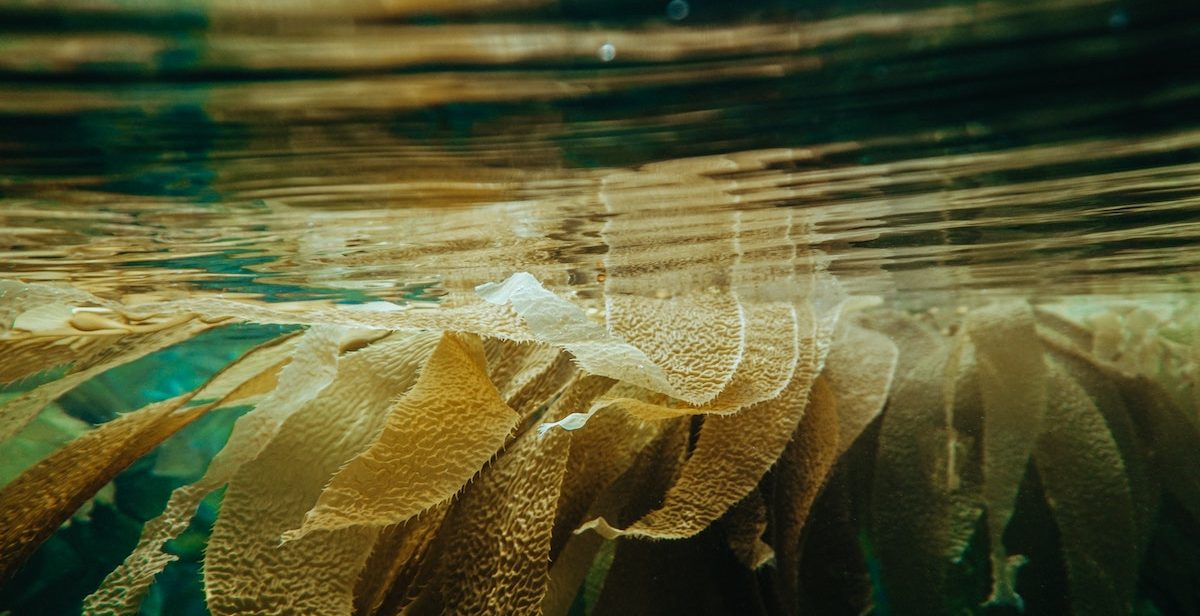Marine plants such as seaweed provide around 70% of the planet’s oxygen. Seaweed captures carbon emissions in the same way that trees do. In fact, these marine plants trap an estimated 190 million tons of carbon each year. They also de-acidify the ocean and fix imbalances in the sea’s ecosystem.
So why don’t we leave seaweed where it is? Well, it just happens to be a superfood with hundreds of other uses. And the good news is, it’s easy to farm seaweed sustainably. People from all sectors are looking to sustainable seaweed for answers to our environmental problems. Intrigued, I decided to find out more.
Why is seaweed so good for you?
Packed with vitamins and stuffed full of nutrients, seaweed is definitely a superfood.
- It’s a rich source of iodine and tyrosine. Both are necessary for a properly functioning thyroid gland
- It contains a broad range of vitamins and minerals, including calcium and iron. Some species contain high levels of vitamin B12. And it’s also a good source of omega-3 fats
- It contains antioxidants, such as vitamins A, E and C, flavonoids and carotenoids. These protect your body from cell damage
- It contains fibre and sugars which feed your gut bacteria, increasing the growth of ‘good’ bacteria
- Some species contain more protein than meat and more calcium than milk
But what makes seaweed sustainable?
Actually, seaweed is one of the most eco-friendly products available. It doesn’t require fresh water, land or fertilisers to grow. And since it requires little infrastructure, seaweed production is the least harmful form of aquaculture (the production of aquatic animals or aquatic plants for food). The best thing about seaweed is that it grows exceptionally fast: up to two feet per day.
Another good thing about seaweed is that it needs inorganic nutrients such as phosphorus and nitrogen to grow. And this can come from agricultural run-off, sewage facilities and fish farms. Seaweed filters the excess nutrients produced by these processes, having a positive environmental effect.
So it’s no surprise that the global seaweed industry has doubled in the past seven years. It’s now worth around £11 billion. Aquaculture is the world’s fastest-growing food sector. And senior scientist at the Centre for Environment, Fisheries and Aquaculture Science, Dr Elisa Capuzzo, says: “The seaweed industry in the UK is still in its infancy but is growing”.
Look along the coastline and you’ll notice seaweed farms appearing all along it.
And what are we doing with it?
Seaweed is incredibly versatile. Innovative companies are using it as a seasoning, making it into crisps, and using it in gin production. It’s a great thickening agent for ice cream and makes the head on a cold beer.
Start looking and you’ll find seaweed in cosmetics, toothpaste and paint. And scientists even hope to make biofuels and other biomaterials out of seaweed.
Seaweed has been described as ‘saviour of the oceans’. Who knows what else it’s capable of?
Australian scientist, Tim Flannery, believes that if seaweed farms were to occupy 9% of the oceans, it would be enough to soak up all human emissions. Let’s hope future research proves this to be true and seaweed saves us all!

